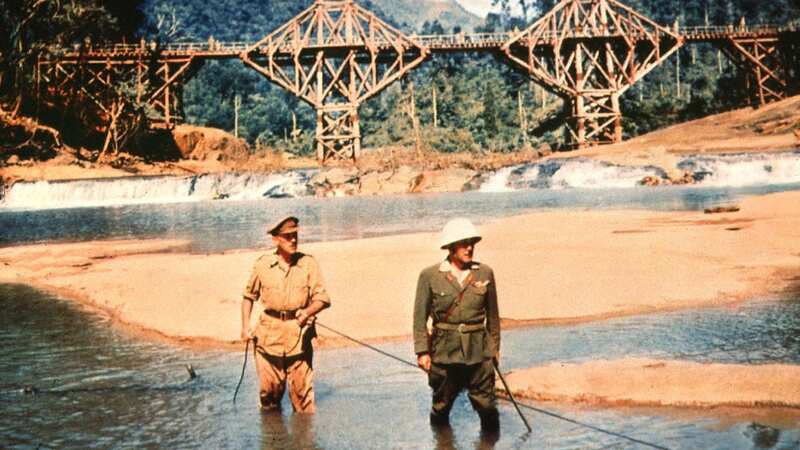Brutality suffered by Brit POW on 'Death Railway' come to light after 80 years

The harrowing memoirs of a British
who survived the horrors immortalised in the film Bridge on the River Kwai have come to light 80 years on.
Sergeant Eric Roberts suffered extreme hardship at the hands of his Japanese captors at Kinsayok Camp while building the Burma-Thai ‘Death Railway’. He was forced to stand in a 2ft deep drainage ditch with fellow PoWs while guards wearing leather boots kicked them in the head.
Eric’s commanding officer, Lieutenant Colonel Lilly, was the inspiration for Colonel Nicholson, played by Sir Alec Guinness, in the classic 1957 war film. Around 90,000 civilians and over 12,000 Allied PoWs died building the 258-mile railway from 1940 and 1943. Eric, a Dunkirk veteran, only revealed scarce details to his grandson Ian Roberts.
Ian said: “Eric found it very difficult to write his experiences. When I was 17 he gave me an envelope with a few letters, postcards from the camps, badges and ration books. He’d written on it ‘all there is to show for seven formative years’. We thought that was all we’d ever see.”
 Give Ukraine western fighter jets to fight Russians, urges Boris Johnson
Give Ukraine western fighter jets to fight Russians, urges Boris Johnson
 Sergeant Eric Roberts in India (Pen & Sword/BNPS)
Sergeant Eric Roberts in India (Pen & Sword/BNPS)But when his family cleared out Eric’s home after he died in 2001, they found 80 pages of his memoirs and letters from him to his sweetheart Eunice Lowe, in which he tells her he “loves her with all his heart” and says it is “hellish” not to hear from her. In a “very emotional process”, Ian transcribed Eric’s memoirs and letters for a new book: Survival and Separation on the River Kwai.
Eric, of Burton, Staffs, met Eunice in 1938 and joined the 1/5 Sherwood Foresters as war broke out. He took part in the Battle fof France and was part of the rearguard at Dunkirk before he was evacuated at Cherbourg. He was sent to the Far East in 1942 but captured after the fall of Singapore and sent to the Burma-Thai Railway.
Eric wrote of how on one occasion, he and his comrades were taken to a hut and made to stand in a 2ft deep trench, before a dozen Japanese guards walked in, all wearing leather boots. He wrote: “We were then accused of not saluting a Japanese officer. We said we had not seen one, being in a tent. This carried no weight and they all set about kicking and beating us. They were obviously enjoying the process.”
Eric said the violence only stopped when his commanding officer stepped in, but added: “This was typical of many incidents. The Japanese enjoyed inflicting pain.” Eric returned home in late 1945 and married Eunice in 1946. They had two children and he later worked for a timber merchants, rising to managing director. Eunice died in 1980. Ian’s book is published by Pen & Sword and costs £20.
Read more similar news:
Comments:
comments powered by Disqus

































